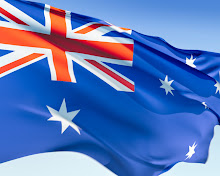
Water
Beer is up to 97% water. Water is therefore fairly important to beer. It carries the flavour and makes the drink last longer and you can use it to rinse out your empties for home brewing. It also helps to build the taste - or flavour profile as the marketing men like to call it - of many beers. But it is still just water. Up to a point.
In days gone by, when the town water supply was used for everything from washing dishes to washing the goat as well as drinking, it became obvious to all but the village idiot that drinking beer was a pleasant alternative to dying of thirst or cholera. Or of having your clothes smell like poo. Worse still, someone else’s poo. Breweries, therefore, liked to site themselves near fresh water sources. This was so that a) good water made good beer, b) flowing water could be harnessed to power mills and other brewing equipment and c) the scenery would make good beer labels in the future.
Beer water can be categorised into two types. Hard and soft. This does not mean that hard water makes Carlton Draught and soft water makes any lager from the United States, but that the character and mineral composition of the water makes a difference to the taste of the final beer.
Nowadays, most commercial breweries alter or adjust their water to fit the beer profile. Adding salts and calcium, magnesium, zinc, sulphate and removing chlorine and fluoride all contribute to the finished taste - in general soft water for lagers and hard water for ales. And recycled poo water for anything out of Adelaide that’s not Cooper’s.

Water was also the reason for, or the impetus for, the development of some beer styles in themselves. Pilsener, for example came about as a result of the nature of the soft water used to brew it as much as for the hop flavour and aroma. The mineral rich H2O at Burton-Upon-Trent is as much to thank for the taste of traditional English ales in those there parts as the skill of the brewer. Cascade beers have a certain aura about them arising in no small part to the images of clear, flowing mountain streams. And the less said about Southwark, the better.
This concludes The Beer Blokes’ Guide to making beer - an entertaining and informative look at the process of making beer and the importance of each of it’s ingredients. For more interesting facts about beer, stay tuned to Beer Blokes, read some books, look up some websites or pop into your local bottle shop and drink some beer. You just might learn something.






3 comments:
The 500 club honours you in your efforts towards such a worthy cause. Learn something we have, and as the taste of the "perfect" brew approaches in the near future, we pray that antidisestablishmentarianism doesnt get in your way. The words of the memorable Mr Booker ring in my ears as he testified to a near perfect hand, and yet was so far away. Your perfect hand is not far away and will beat the best misere hand JB can ever muster. Brew hard, brew long and brew with passion - let god look down soon and give the perfect head, with a taste to match. Bart (RIP) would be proud - as would that bloody beach ball I can't remember the name of. Leeroy I think.
P.s. you know who I am but couldn't be bothered registering so my name comes up..so lazily I'll remain as anonymous your friend.
Thank You for your interesting post Lazy Anon.
I hope you can join us soon for a TREBle of Lagers OR Pilsners. Your words are EVA an inspiration and I am GRateful. I think I might do a commemorative batch soon, maybe a Ned Kelly Ale or Celica stout.
Cheers,
Prof. Pilsner
P.S. the beach ball's name was Leon.
Post a Comment